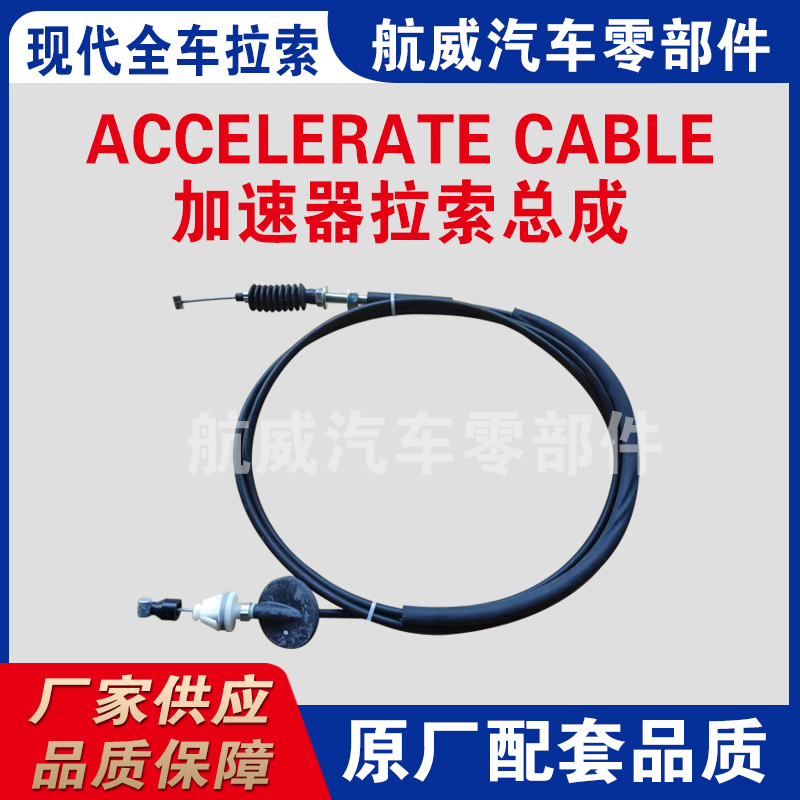Tips for Fine-Tuning Your Throttle Cable for Optimal Performance
Adjusting the Throttle Cable A Step-by-Step Guide
The throttle cable plays a crucial role in the performance of your vehicle. It connects the accelerator pedal to the engine's throttle body, allowing the driver to control the engine's power output. Over time, the throttle cable can stretch or become misadjusted, leading to suboptimal vehicle performance. In this article, we’ll explore how to adjust your throttle cable to ensure smooth operation and responsiveness of your vehicle.
Understanding the Throttle Cable
Before diving into the adjustment process, it's important to understand how the throttle cable functions. When you press the accelerator pedal, the throttle cable pulls on the throttle body, which allows more air and fuel to enter the engine, thus increasing power. If the cable is too loose, the throttle response will be delayed. Conversely, if it is too tight, it may prevent the throttle from closing completely, potentially leading to unintended acceleration. Therefore, proper adjustment is essential for your safety and the performance of your vehicle.
Tools and Materials Needed
To adjust the throttle cable, you will need
1. A socket or wrench set 2. A Phillips or flathead screwdriver 3. A torque wrench (if applicable) 4. Safety gloves 5. A helper (optional)
Step-by-Step Adjustment Process
1. Safety First
Before starting any adjustment, ensure your vehicle is parked on a level surface, and the engine is turned off. Engage the parking brake to prevent any movement.
2. Locate the Throttle Cable
Open the hood and locate the throttle cable. It usually runs from the accelerator pedal through the firewall to the throttle body. Take some time to familiarize yourself with its routing and the components it interacts with.
3. Inspect the Cable for Damage
adjusting throttle cable

Before making any adjustments, visually inspect the throttle cable for any signs of wear, fraying, or damage. If you notice any issues, consider replacing the cable before making adjustments.
4. Check the Cable Slack
To check the cable slack, have a helper press the accelerator pedal gently while you observe the throttle body. Ideally, there should be a slight amount of slack in the cable when the pedal is not depressed.
5. Adjusting the Cable
If you find that the cable is too tight or too loose, you can adjust it
- For a loose cable Locate the adjustment mechanism on the throttle cable. This is often a threaded barrel or a nut that can be turned. By turning it clockwise, you will shorten the length of the cable, reducing slack. - For a tight cable Conversely, if the cable is too tight, turn the adjustment mechanism counterclockwise to increase the slack in the cable.
Make small adjustments and check the throttle response frequently to avoid over-tightening or over-loosening the cable.
6. Test the Throttle Response
Once you've made the necessary adjustments, close the hood and start the engine. Gently press the accelerator pedal and observe if the throttle responds smoothly and immediately to your foot’s movement. If not, repeat the adjustment process until you achieve the desired response.
7. Final Checks
Finally, confirm that all connections are tight and secure. If applicable, torque any bolts or screws to the manufacturer’s specifications. Take your vehicle for a short test drive to ensure that the throttle is functioning correctly under various driving conditions.
Conclusion
Adjusting the throttle cable is a simple yet essential task that can significantly improve your vehicle’s performance and responsiveness. By following the steps outlined in this guide, you can ensure your throttle cable is correctly adjusted, leading to a better driving experience. Regular maintenance and checks will help prolong the life of your throttle cable and prevent potential issues down the road. Always prioritize safety and consider consulting with a professional mechanic if you're unsure about any step in the adjustment process.
-
Workings of Clutch Pipe and Hose SystemsNewsJun.04,2025
-
The Inner Workings of Hand Brake Cable SystemsNewsJun.04,2025
-
The Secrets of Throttle and Accelerator CablesNewsJun.04,2025
-
The Hidden Lifeline of Your Transmission Gear Shift CablesNewsJun.04,2025
-
Demystifying Gear Cables and Shift LinkagesNewsJun.04,2025
-
Decoding Clutch Line Systems A Comprehensive GuideNewsJun.04,2025
